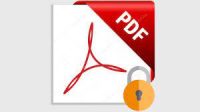 Most users have a love-hate relationship with Outlook. It’s great until it doesn’t work as expected. Users are often frustrated when they can’t find an email message that they know is in their Inbox somewhere. TechRepublic member Marty’s best solution is to use a search folder, but in this article, I’ll introduce you to Instant Search and its contextual Ribbon tools.
Most users have a love-hate relationship with Outlook. It’s great until it doesn’t work as expected. Users are often frustrated when they can’t find an email message that they know is in their Inbox somewhere. TechRepublic member Marty’s best solution is to use a search folder, but in this article, I’ll introduce you to Instant Search and its contextual Ribbon tools.
I’m using Outlook 2016 on a Windows 10 64-bit system, but these tools are available in older versions. There’s no downloadable demonstration file because you won’t need one. Search Folders aren’t available in Office 365 Mail.
Filter for all sent and received mail on the current day
Marty has a hard time keeping up with mail the day it arrives; she wants to review only the new items received and sent that day so she can stay on top of things. For Marty, I recommend a search folder that displays sent and received mail for the current day only—and it’s easier than you might think. You create a new search folder and use the Advanced Criteria option to add the necessary filtering strings.
If you have more than one account, select the account in question to get started. Next, right-click Search Folders in the Folder pane and then choose New Search Folder. In the resulting dialog, choose Create A Custom Search Folder from the Custom section at the bottom of the list and click OK. When Outlook asks you to enter a name, click OK to continue and then enter a name for the folder. For this example, we’ll name the folder Today. Once you’ve entered the name, click OK.
Now that you’ve created the folder, you’re ready to add the criteria that populates it. To do so, click the Criteria button and then click the Advanced tab. From the Field dropdown, choose Date/Time fields and select Received. From the Condition dropdown, choose Today and then click Add To List. This will display all messages received during the current day in the custom search folder. That means the folder’s contents change every day.
Now, create criteria for all the mail you send. From the Field dropdown, choose Date/Time fields and then select Sent. From the Condition dropdown, choose Today and click Add To List. Click OK three times to return to Outlook, which will update the Today search folder automatically as you send and receive email.
The new folder will display messages you received and sent during the current day. It will also display messages you move to the Deleted Items folder. You can work from this folder or use it for referencing throughout the day. Deleting a message from the search folder won’t delete the message from your Inbox. Deleting a message from your Inbox won’t delete it from your search folder!
Instant Search
As Marty has learned, keeping up with mountains of email can turn into a full-time job. Deleting and organizing messages helps, but the biggest problem is often finding a specific message. Search folders are a great tool when you repeat the same search or type of search. It’s a virtual folder that provides a view of all email that matches the criteria you specific. The above example is just one—there are dozens of ways to combine different criteria settings, so spend some time exploring this feature.
Instant Search (look for the Search Today prompt at the top of the message list) is a great tool for finding messages on the fly. For instance, if you want to find a message from a specific person, just enter their name.
You can enter as many search items as necessary to narrow your search. You might enter the person’s name and a project or meeting. For instance, “Susan Harkins team meeting” would find the message that specifies where you’re meeting. It would also find messages that contain any of those words. A better search string might be FROM:Susan Harkins, meeting. This would find only those messages from Susan with meeting somewhere in the message. You can reference any column header in this way. You can also use logical operators such as AND, NOT, OR, <, >, and =. Wrap a string in double quotation marks to search for that exact verbiage. Once you use this feature a few times, it will become second nature to you.
Search Tools Ribbon
The Search Tools Ribbon is an underused treasure chest. To display these tools, click inside Instant Search. These tools are helpful when you want to narrow your search or when you’re looking for something very specific. It’s also an easy way to use the logical operators and column headers when you’re unfamiliar with the syntax and possibilities.
These tools are easy to use. Once you start exploring, you’ll probably find options you didn’t know about but can put to immediate use.
For more information on solutions for running your businesses’ technology more efficiently, visit our website or contact Megan Meisner at mmeisner@launchpadonline.com or 813 448-7100 x210.
This was originally posted by Susan Harkins for TechRepublic.




